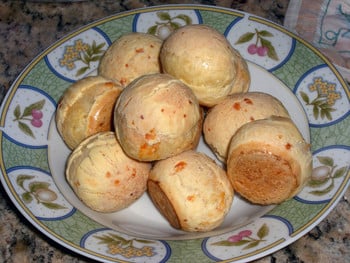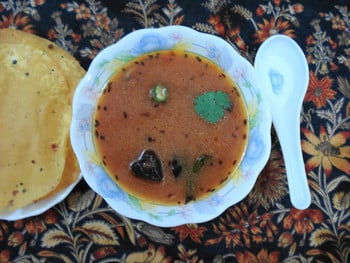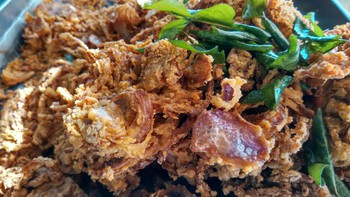Site will be
unavailable for maintenance from June. 4, 11:30 p.m., to June 5, 12:30 a.m. ET. Thank you for your
patience!
Comfort Food Around the Globe
Posted on 02/04/2016
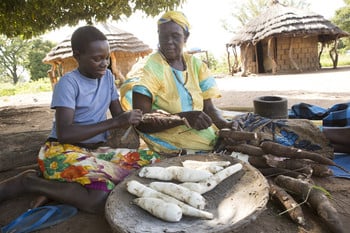
Photo by Jake Lyell
Recipes are part of everyone’s cultural heritage. Opening a stained cookbook from an earlier generation or recalling a relative’s baking tips give many home cooks a private thrill.We have asked our colleagues all over the world to send us their favorite comfort food recipes. They came through, big time!
You’ll see a few unusual ingredients here and there — from buffalo meat to tamarind juice — but if you can’t find the exact items in a specialty grocery store, you should be able to find reasonable substitutes. Enjoy getting to know another culture — maybe your sponsored child’s — while cooking, and please share your results with us on ChildFund’s Facebook page.
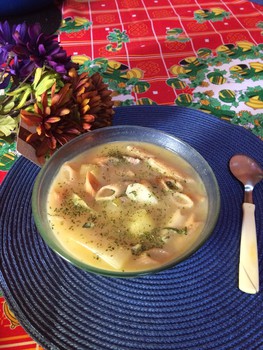
Sopa de maní is most often made with chicken or beef, but you can use vegetables instead for a delicious and nutritious vegetarian meal.
Serves 4.
INGREDIENTS
- 1 tablespoon peanut oil
- 1 large onion, diced
- 2 carrots, cut into thick, round slices
- ½ cup green peas
- ½ cup tomatoes, skinned and diced
- ½ pound chicken, cut into bite-size pieces
- 4 cups beef stock
- ½ cup raw peanuts, ground in a blender. Pieces must be very small.
- 1 ½ potatoes, peeled and diced
- 1 ½ cups macaroni, toasted
- Salt and pepper, to taste
- Hot pepper sauce, to taste
- Minced fresh parsley
DIRECTIONS
Heat the oil in a large saucepan over low heat and stir in the onion and carrots. Cook slowly until the onions and carrots are soft, about 10 minutes. Stir in the peas, tomato and chicken, and let them cook slowly another 10 minutes, stirring from time to time. Pour in the beef stock, the ground raw peanuts, the macaroni and the whole diced potato, leaving the half potato aside. Bring to a boil, then reduce to a simmer and partially cover the pot. Cook without stirring for 30 minutes.
Fry the remaining diced potatoes in hot peanut oil until crisp. Remove them and place on paper towels. When ready to serve, season the soup with salt, pepper and hot sauce (preferably Bolivia’s llajua, if possible). Ladle the soup into bowls and top with the crisp fried potatoes and a sprinkling of minced parsley.
VARIATIONS
Use whatever vegetables you have on hand to flavor the soup in addition to the basic onions and garlic. Popular additions include celery, bell peppers, carrots, peas and tomatoes.
INGREDIENTS
- 1 pound dry black beans
- 1 pound salted pork ribs
- 1 pound salted bacon
- 8 tablespoons olive oil
- 2 onions, peeled and finely chopped
- 6 cloves garlic, peeled and finely chopped
- 2 large smoked sausages, cut into big chunks
- 1 tablespoon freshly ground black pepper
- 5 bay leaves
- Cooked rice, orange slices and spring greens, as accompaniment
DIRECTIONS
Soak the beans in cold water overnight, making sure they are completely covered. Also soak the salted ribs and bacon in cold water overnight.
Drain the beans and put them into a large saucepan of cold water. Bring to a boil over medium heat and simmer for 30 minutes until tender.
Rinse the soaked salted ribs and bacon well, add the meat to the beans, and cook for 30 minutes over medium heat. Heat a very large saucepan, and pour in the olive oil so it covers the bottom. Add the onions and garlic, and cook until softened. Add the sausages, smoked ribs and bacon, pepper, bay leaves and beans. Cover with water. Simmer for about an hour, until the meat is tender enough to fall off the bone. Remove the bay leaves before serving.
Serve the feijoada with boiled white rice, orange slices and very finely sliced greens fried in olive oil with chopped onion and garlic.
INGREDIENTS
- 2 cups sour cassava starch (gluten free!)
- 2 cups milk
- 1 cup cooking oil
- 4 eggs
- 1 cup finely crumbled Feta cheese
- 1 cup grated parmesan cheese
- 1 tablespoon salt
DIRECTIONS
Boil the milk, oil and salt together, without letting the milk scald. Pour the hot mixture into a large bowl with the sour starch and mix with a wooden spoon. The mixture will look like a large ball of gummy paste.
Let it cool, and then mix in the cheese and the eggs. Get your hands in there and squish everything together into a smooth, thick dough. Grab chunks of it with your fingers and roll in the palm of your hands, making little balls just smaller than a golf ball.
Place the dough balls on a cooking tray. Pão de Queijo will grow around 20 percent to 30 percent as they cook, so leave some space between them.
Place them in the top shelf of your oven at 375 degrees Fahrenheit, and let them bake for 15 minutes.
Reduce the temperature (to around 300 degrees) and cook for another 15 minutes. They should look golden brown and crackly and crusty outside. But inside, your Pão de Queijo will still be nice and gooey … and cheesy!
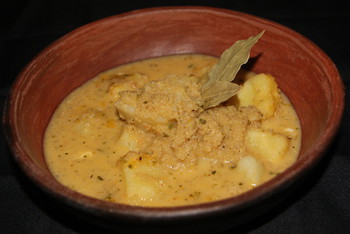
Serves 4.
Quinoa originated in the Andean region of Peru, Bolivia, Ecuador and Colombia. It was an important crop for the Inca Empire, known as “the mother of all grains,” and was first cultivated more than 5,000 years ago. Most people assume quinoa is a grain, but it is actually a seed that provides essential vitamins, minerals and fiber that help regulate the digestive system. It does not contain any gluten. At 8 grams a cup, it is high in protein and is considered a complete protein because it contains all 9 essential amino acids.
The United Nations’ Food and Agricultural Organization (FAO) declared 2013 the International Year of the Quinoa to raise awareness of how this crop provides good nutrition and increases food security.
INGREDIENTS
- 1 cup dry quinoa
- 1 pound potatoes, peeled and diced
- ½ cup green onion, finely chopped
- ¼ cup diced carrot
- 1 tablespoon annatto seed oil
- 4 cups water
- 1 cup milk
- 1 cup queso fresco, crumbled or broken into pieces
- Salt and cumin, to taste
- Parsley or cilantro, to garnish
DIRECTIONS
Rinse the quinoa to remove its natural coating, saponin, which can taste bitter. Let it rest in some water for 15 minutes before draining. In a pot, heat the annatto (achiote) seed oil and the onions for 2 to 3 minutes, stirring constantly.
Pour in the 4 cups of water and bring to a boil. Then, add quinoa and carrot, and cook until the quinoa opens or thickens. Add the potatoes and cook until they are soft. Add the milk and the cheese and cook for 3 minutes, being careful not to scald the milk. Season with salt and cumin to taste. Garnish with parsley or cilantro.
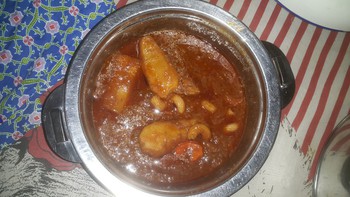
Serves 4.
Cooking time: 45-50 minutes
Note from Fatoumata Hann of ChildFund Guinea: If you don’t have beef, you can use chicken. There are tons of ways to make beef stew, and this is the most delicious way I have found to make it with a lot of vegetables.
INGREDIENTS
- 1 pound stew beef, cut into cubes
- 3 tablespoons peanut oil or vegetable oil
- 2 onions, one sliced and the other minced
- 2 fresh tomatoes, mashed
- 2 tablespoons tomato paste
- 4 cloves garlic, crushed
- 1 carrot, cubed
- 2 potatoes, cubed
- 2 bouillon cubes
- 4 cups water
- Black pepper, chili pepper and salt, to taste
- Optional: thyme leaves, bay leaves and spring onions
- You can also add more vegetables, such as cassava, pumpkin and cabbage.
DIRECTIONS
Start by seasoning the beef with black pepper, salt, garlic and the sliced onion. You can add thyme and bay leaves if desired.
Next, in a saucepan, heat the oil and fry the seasoned beef for 5 to 10 minutes or until the meat is browned.
In a large bowl, mix the mashed tomatoes and tomato paste with the carrot; stir the mixture into the saucepan. Stir everything very well, and then add one cup of water.
You can add more water if necessary. Now let the stew simmer for 20 minutes, or until the beef absorbs almost all the liquid.
Next, add the potatoes and minced onion, plus chili pepper to taste.
Add the remaining water with the bouillon cubes. Salt the stew to your taste, and let it simmer for 20 minutes. Check to see if the meat and all the vegetables are tender.
Serve the stew with rice or bread, or even couscous. And enjoy!
Serves 4.
Preparation time: 20 minutes
INGREDIENTS
- 4 cups of water
- 1/3 to 1/2 cup peeled fresh ginger
- 1 1/4 cup fresh pineapple chunks
- 1/3 cup lemon juice
- 1/2 cup sugar
DIRECTIONS
Put the ginger, pineapple and lemon juice in a food processor or blender, and purée. Then add the mix to the water and stir well. Filter it through a sieve to remove the pulp. Add sugar to the drink and stir. You can add more sugar if you like. Refrigerate for two hours and serve cold.
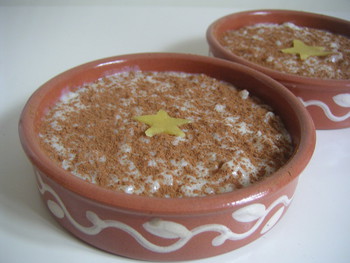
Serves 3-4.
Preparation and cooking time: 30 minutes
INGREDIENTS
- 1 cup long-grain white rice
- 2 cups water
- ½ cup whole milk
- 1 cup evaporated milk
- 1 cup condensed milk
- 1 teaspoon vanilla extract
- 1 pinch of salt
- Cinnamon sticks (one per bowl)
- Powdered cinnamon (to decorate)
DIRECTIONS
Boil water with a cinnamon stick in it for about 10 minutes, and then remove the stick and lower the burner temperature. Rinse your rice and add it to the water, and let it cook for about 7 minutes. Let the water boil again and add the remaining ingredients: whole milk, evaporated milk, condensed milk, vanilla and a pinch of salt.
After adding these ingredients, you have to constantly stir and stir; after a while, the consistency is going to be very thick and delicious. Serve it in bowls with a cinnamon stick in each, and sprinkle a little cinnamon powder to decorate.
You can eat it hot or cold. Either way, it’s delicious. Enjoy!
Rasam is a South Indian soup, traditionally prepared using tamarind juice as a base, with the addition of tomato, chili pepper, black pepper, cumin and other spices as seasonings. It is eaten with rice or separately as a spicy soup. In a traditional meal, it is preceded by a sambar rice course and is followed by curd rice. Best served hot, it’s a perfect dish for a cool winter evening. Also, when you are feeling under the weather, rasam warms your soul and opens up your nasal passages and soothes a sore throat. In terms of health benefits, it aids digestion and prevents constipation. Rasam makes for a good party appetizer, too!
INGREDIENTS
For the rasam powder:
- 1 teaspoon coriander seeds
- 3 whole dry kashmiri red chilis, broken into pieces
- 5 or 6 black peppercorns
- 1 teaspoon split dried red lentils (sometimes called red grams, arhal dal or tur dal)
- ½ teaspoon split dried Bengal lentils (called chana dal)
- a pinch of cumin seeds
Other ingredients:
- 2 tablespoons split red lentils
- ½ cup finely chopped tomatoes
- ¼ cup tamarind pulp
- a pinch of asafoetida (sometimes called hing)
- a pinch of turmeric powder
- salt to taste
- 1 teaspoon oil
- ¼ teaspoon mustard seeds
- 3 to 4 curry leaves
- 2 teaspoons chopped coriander (cilantro) leaves
DIRECTIONS
For the rasam powder:
Combine all the ingredients in a broad nonstick pan and sauté over medium heat for two to three minutes. Allow to cool completely. Once cooled, blend with a mortar and pestle or in a food processor to a smooth powder. Set aside.
Making the soup:
Place the split red lentils and a cup of water in a saucepan and cook until lentils are soft, about 20 to 30 minutes. With a hand blender, blend the dal until smooth, and then add the prepared rasam powder to it. Mix well and keep aside.
Combine the tomatoes, tamarind pulp, turmeric powder, asafoetida, salt and three cups of water in a saucepan. Mix well and cook over medium heat for 8 to 10 minutes, stirring occasionally.
Next, add the prepared dal-rasam powder mixture to the saucepan. Stir well and cook over medium heat for three to four minutes, stirring occasionally. Turn down the heat.
Heat the oil in a small pan and add the mustard seeds and curry leaves. When the seeds crackle, add these spices to the soup and simmer for one minute.
Add the coriander leaves just before serving, and mix well. Serve the soup hot.
Whether you want to entertain guests or just enjoy a pleasant rainy evening or cold wintery day, a crispy and spicy onion pakoda (also known as pakora, or fritter) can never go out of fashion. It’s even better when accompanied by masala tea or your favorite chutney.
Onion fritters made with gram (chickpea) flour are a popular Indian street food and easy to prepare.
INGREDIENTS
- 2 onions
- 10 green chilies
- 1-inch piece fresh ginger
- ¼ cup fresh coriander (cilantro)
- 10-12 curry leaves
- 20 cashews
- salt to taste
- 1 teaspoon red chili powder
- ¼ teaspoon asafoetida (sometimes called hing)
1 tablespoon pure ghee (clarified butter) - ¼ teaspoon baking powder
- 1 cup gram (chickpea) flour (also known as besan)
- ¼ cup rice flour
- Olive or safflower oil for deep-frying
DIRECTIONS
Peel and slice the onions. Wash and mince the green chilies, ginger, coriander and curry leaves. Chop the cashews into small bits and mix with the above ingredients.
Add salt, red chili powder, asafoetida, ghee and baking powder to the mixture.
Sprinkle ¼ cup water over the whole thing and set aside for about 10 minutes.
Mix the gram (chickpea) flour and the rice flour thoroughly.
Heat oil in a frying pan.
Lightly stir together the onion mixture with the flour.
Drop small portions of the mixture into the hot oil until crisp and golden (no more than a minute or two).
Drain the oil and serve your hot onion pakoras with fried green chilies, coriander chutney or tomato sauce.
Serves 6-8.
INGREDIENTS
- 4 cups rice
- ½ cup cooking oil
- 2 large onions, chopped
- 8 to 10 garlic cloves, crushed
- 1 pound beef or goat meat, cut into bite-size chunks
- 2 to 3 heaping tablespoons tomato paste
- 1 heaping tablespoon sugar
- 4 teaspoons ground Pilau Masala seasoning
- 8 cups water
- salt to taste
DIRECTIONS
Boil the meat until tender. (You can skip this bit if you do not like your meat too soft.) Keep the broth for cooking.
In a large saucepan, heat the oil. Then add the onions and fry to golden brown.
Next, add the meat, then salt it and fry till brown.
Cook the garlic, pilau masala, sugar and tomato paste in the same pan, stirring for two minutes to prevent sticking or burning.
Let the mixture cook with roughly half a cup of water or broth for about five minutes. (By now, the neighbors should be able to smell your pilau cooking!)
Pour in the rest of the water and let it boil. Taste the dish now and see if you need to add more salt. Add the rice and let it boil. Reduce the heat and cover the pot.
Now, in the unlikely event that the rice dries up and is not fully cooked, add a cup or two of warm water and stir with a fork. Let it cook.
If you are cooking smaller portions, remember, use 1 teaspoon of masala per cup of rice and reduce sugar as well.
Serves 6-8.
Similar to doughnuts, mandazi are often eaten for breakfast or as a snack. Coconut milk can be added to make them sweeter.
INGREDIENTS
- 1 egg, beaten
- ¼ cup sugar
- ½ cup milk, or replace half of the milk with water if desired
- 2 tablespoons butter, melted
- 2 cups flour
- 2 teaspoons baking powder
- ½ teaspoon nutmeg or cinnamon
DIRECTIONS
All ingredients should be room temperature before mixing. Once they are, mix all the ingredients together, adding more flour if necessary. The dough should be soft but not sticky.
Next, roll the dough on a lightly floured board until it is about ¼-inch thick. Cut it into triangles or squares and fry it in hot oil until both sides are golden brown. Now, remove the mandazi from the oil and drain them on paper towels.
This recipe comes from South Dakota’s Lakota tribe.
INGREDIENTS
- 3 cups cooked cubed beef or buffalo meat
- 6 cups beef broth
- 3 medium potatoes (peeled and cubed)
- 3 medium carrots (cut in ½-inch slices)
- 1 tablespoon Worcestershire sauce
- salt and pepper to taste
DIRECTIONS
Add the browned meat to the broth in a stock pot. Add carrots, potatoes and Worcestershire sauce. Simmer over low heat for 45 minutes. If using buffalo meat, add the meat to the pot in the last 15 minutes of cooking. Season with salt and pepper to taste.
The creamy, nutritious drink is indigenous to Ethiopia. The word atmit originated in Ethiopia and refers to a kind of thin, nourishing porridge. Traditionally, Atmit can be made with 20 different kinds of cereal, and recipes can vary widely.
Here, atmit is made with a rolled oat powder, milk and sugar, and provides important vitamins and minerals. It is easily digestible, plus high in protein and calories. It often is used to fight malnutrition.
INGREDIENTS
- 1 cup water
- 2 cups milk
- 2 tablespoons sugar
- 5 tablespoons aja (oat) powder
DIRECTIONS
Boil one cup of water and two cups of milk, making sure not to scald the milk. Add the aja powder into the hot water and milk. Whisk regularly until it is well cooked (around 20 min). Add sugar (or honey) and serve.
Loading...


